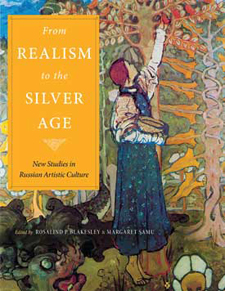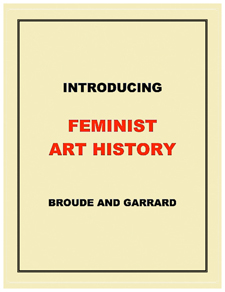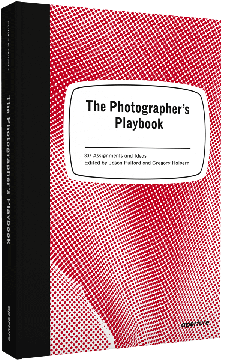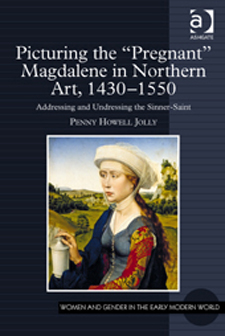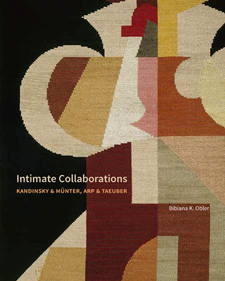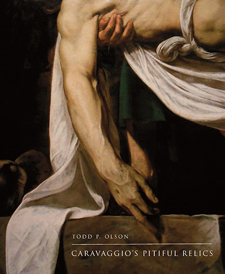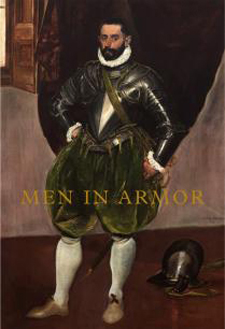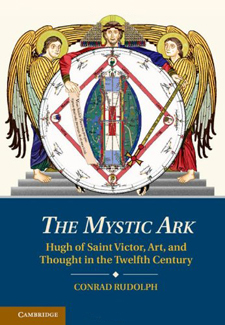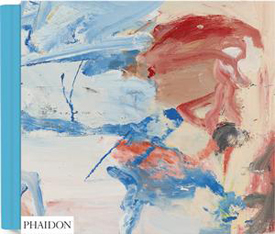CAA News Today
Grants, Awards, and Honors
posted by CAA — August 15, 2014
CAA recognizes its members for their professional achievements, be it a grant, fellowship, residency, book prize, honorary degree, or related award.
Grants, Awards, and Honors is published every two months: in February, April, June, August, October, and December. To learn more about submitting a listing, please follow the instructions on the main Member News page.
August 2014
Wendy Bellion, associate professor of American art and material culture at the University of Delaware in Newark, has been awarded the Charles C. Eldredge Prize for Distinguished Scholarship in American Art from the Smithsonian American Art Museum for her book Citizen Spectator: Art, Illusion, and Visual Perception in Early National America (Chapel Hill: University of North Carolina Press; Williamsburg, VA: Omohundro Institute of Early American History and Culture, 2011).
Elizabeth Buhe, a doctoral student in art history at New York University’s Institute of Fine Arts, has received a Student Research Grant from the Mellon Research Initiative to participate in “From ‘Surface’ to ‘Substrate’: The Archaeology, Art History, and Science of Material Transfer,” a conference taking place November 7–8, 2014.
Jennifer Cohen, a PhD candidate in art history at the University of Chicago in Illinois, has earned a William H. Truettner Predoctoral Fellowship from the Smithsonian American Art Museum in Washington, DC. She will work on “Fantastic Boxes: Shop Windows and Surrealist Space in Wartime New York.”
Laura Dickey Corey, a PhD candidate in art history at New York University’s Institute of Fine Arts, has been awarded the Frick Center for the History of Collecting Junior Fellowship for summer/fall 2014.
John Fagg, a lecturer in the school of English, Drama, and American and Canadian Studies at the University of Birmingham in England, has won the 2014 Terra Foundation for American Art International Essay Prize for “Bedpans and Gibson Girls: Clutter and Matter in John Sloan’s Graphic Art,” which will appear in the journal American Art in 2015.
Annika Fine, a doctoral student in art history at New York University’s Institute of Fine Arts, has received a Student Research Grant from the Mellon Research Initiative to give a presentation during “From ‘Surface’ to ‘Substrate’: The Archaeology, Art History, and Science of Material Transfer,” a conference taking place November 7–8, 2014.
Kristen Gaylord, a doctoral student in art history at New York University’s Institute of Fine Arts, has been awarded the Joan R. Challinor Award for distinction in the area of women and Catholicism from the Arthur and Elizabeth Schlesinger Library on the History of Women in America at the Harvard University’s Radcliffe Institute for Advanced Study. Gaylord has also received the Patricia Dunn Lehrman Fellowship from NYU’s Graduate School of Arts and Sciences.
Orit Halpern, assistant professor in history at the New School of Social Research and Eugene Lang College and an affiliate in the graduate program in design studies at Parsons the New School for Design, all in New York, has won a 2014 research grant from the Graham Foundation. She will work on “Rational Utopias,” a project that explores the history and ethnography of “smart” territories and ubiquitous computing.
Nicholas Hartigan, a PhD student in art history at the University of Michigan in Ann Arbor, has been named a Committee on Institutional Cooperation-Smithsonian Predoctoral Fellow by the Smithsonian American Art Museum in Washington, DC. His research project is called “The Changing Function of Public Sculpture.”
Leslie Hewitt, an artist based in New York, has won a 2013 Biennial Award from the Louis Comfort Tiffany Foundation, which comes with a $20,000 grant.
Alicia Imperiale, assistant professor of architectural history, theory, and design at Temple University’s Tyler School of Art in Philadelphia, Pennsylvania, has won a 2014 research grant from the Graham Foundation. Her project is called “An Alternate Organicism in the Journal Zodiac, 1965–1974.”
Katherine Jentleson, a doctoral student in art history at Duke University in Durham, North Carolina, has become a Douglass Foundation Predoctoral Fellow in American Art at the Smithsonian American Art Museum in Washington, DC, for her project, “Gatecrashers: The First Generation of Outsider Artists in America.”
Steve Locke, an artist based in Boston, Massachusetts, has accepted a 2013 Biennial Award from the Louis Comfort Tiffany Foundation. He will receive a $20,000 gift.
Katherine Markoski, an independent scholar based in Alexandria, Virginia, has received a postdoctoral fellowship at the Smithsonian American Art Museum in Washington, DC. Her research examines “The Imagination of Community: Artistic Practice at Black Mountain College”
Rachel Middleman, assistant professor of art history at Utah State University in Logan, has won a postdoctoral fellowship at the Smithsonian American Art Museum in Washington, DC, to research “Radical Eroticism: Women, Art, and the Transformation of Sexual Aesthetics in the 1960s.”
Jennifer Stettler Parsons, a graduate student in art history at the University of Virginia in Charlottesville, has received a Sara Roby Predoctoral Fellowship in 20th-Century American Realism from the Smithsonian American Art Museum in Washington, DC. Her project is titled “John Sloan: Between Philadelphia and New York, 1892–1907.”
Carol McMichael Reese, Mary Louise Christovich Associate Professor in the School of Architecture at Tulane University in New Orleans, Louisiana, has been awarded a 2014 publication grant (with her two coeditors) from the Graham Foundation for New Orleans under Reconstruction: The Crisis of Planning, the first book to illustrate and analyze architectural, landscape, and planning responses for post-Katrina New Orleans.
Margaret Samu, from the Art History Department at Yeshiva University’s Stern College for Women in New York, has been awarded a Summer Fellowship in Garden and Landscape Studies at Dumbarton Oaks Research Library and Collection in Washington, DC. She will use the fellowship to work on her project “Baroque Sculpture Display in Peter the Great’s Summer Garden.”
Nina Schleif from the Bavarian State Art Museums has become a Terra Foundation Senior Fellow in American Art at the Smithsonian American Art Museum in Washington, DC. She is investigating “Warhol’s Drawings of the Fifties: Sources, Techniques, Meanings.”
Michelle Smiley, an MA student in history of art at Bryn Mawr College in Bryn Mawr, Pennsylvania, has been accepted into the 2014 summer internship program at the National Gallery of Art in Washington, DC.
Juliet Sperling, a graduate student in art history at the University of Pennsylvania in Philadelphia, has accepted a Wyeth Foundation Predoctoral Fellowship from the Smithsonian American Art Museum in Washington, DC. She will research “Animating Flatness: Seeing Moving Images in American Painting and Mass Visual Culture, 1820–95.”
Edit Tóth, who teaches at Juniata College in Huntingdon, Pennsylvania, and Pennsylvania State University in Altoona, has earned a 2014 research grant from the Graham Foundation for her book, Bauhaus Photography and Design: Moholy-Nagy, Breuer, Henri, Yamawaki, and Kepes.
Jesús Vassallo, assistant professor in the School of Architecture at Rice University in Houston, Texas, has accepted a 2014 research grant from the Graham Foundation for his project, “Building with Images.”
Jillian Vaum, a graduate student pursuing a master’s degree in art history at the University of Pennsylvania in Philadelphia, has participated in the 2014 summer internship program at the National Gallery of Art in Washington, DC.
Megan Whitney, an MA student in art history at the University of Tucson in Arizona, has been accepted into the 2014 summer internship program at the National Gallery of Art in Washington, DC.
Lara Yeager-Crasselt, a lecturer in the Department of Art at the Catholic University of America in Washington, DC, has been awarded a Belgian American Educational Foundation Fellowship for academic year 2014–15. She will carry out postdoctoral work as a research fellow in the Department of Art History at KU Leuven in Belgium.
Molly Zuckerman-Hartung, an artist based in Chicago, Illinois, has received a 2013 Biennial Award from the Louis Comfort Tiffany Foundation. She will receive a $20,000 gift from the foundation.
Exhibitions Curated by CAA Members
posted by CAA — August 15, 2014
Check out details on recent shows organized by CAA members who are also curators.
Exhibitions Curated by CAA Members is published every two months: in February, April, June, August, October, and December. To learn more about submitting a listing, please follow the instructions on the main Member News page.
August 2014
Kelly Baum. Lee Bontecou: Drawn Worlds. Princeton University Art Museum, Princeton University, Princeton, New Jersey, June 28–September 21, 2014.
Kelly Baum. Rothko to Richter: Mark-Making in Abstract Painting from the Collection of Preston H. Haskell. Princeton University Art Museum, Princeton University, Princeton, New Jersey, May 24–October 5, 2014.
Reni Gower. Papercuts. Robert L. Ringel Gallery, Patti and Rusty Rueff Galleries, and Fountain Gallery, Purdue University Galleries, Purdue University, Lafayette, Indiana, July 2–August 9, 2014.
Allison Leigh. Jersey Women Artists Now: Contemporary Visions. George Segal Gallery, Montclair State University, Montclair, New Jersey, March 6–April 19, 2014.
Sarah Lippert. Fantasy, Fiction, and Fact in Popular Illustration: 1750–1900. Flint Institute of Arts. Flint, Michigan, May 3–August 3, 2014.
Cary Liu. Chigusa and the Art of Tea in Japan. Princeton University Art Museum, Princeton University, Princeton, New Jersey, October 11, 2014–February 1, 2015.
Patricia Miranda. STEAM: Art, Science and Technology. ArtsWestchester, White Plains, New York, May 20–August 15, 2014.
Jeongho Park. Men in Armor: El Greco and Pulzone Face to Face. Frick Collection, New York, August 5–October 26, 2014.
Nathaniel M. Stein. In Dialogue: Wolfgang Tillmans. Philadelphia Museum of Art, Philadelphia, Pennsylvania, July 1–October 26, 2014.
James Steward. Alexander Calder 1967. Princeton University Art Museum, Princeton University, Princeton, New Jersey, January 15–October 28, 2014.
Books Published by CAA Members
posted by CAA — August 15, 2014
Publishing a book is a major milestone for artists and scholars—browse a list of recent titles below.
Books Published by CAA Members appears every two months: in February, April, June, August, October, and December. To learn more about submitting a listing, please follow the instructions on the main Member News page.
August 2014
Ronald R. Bernier. The Unspeakable Art of Bill Viola: A Visual Theology (Eugene, OR: Wipf and Stock Publishers, 2014).
Rosalind P. Blakesley and Margaret Samu, eds. From Realism to the Silver Age: New Studies in Russian Artistic Culture (DeKalb: Northern Illinois University Press, 2014).
Norma Broude and Mary D. Garrard. Introducing Feminist Art History (Amazon ebook, 2014).
Jason Fulford and Gregory Halpern, eds. The Photographer’s Playbook: 307 Assignments and Ideas (New York: Aperture, 2014).
Penny Howell Jolly. Picturing the “Pregnant” Magdalene in Northern Art, 1430–1550: Addressing and Undressing the Sinner-Saint (Burlington, VT: Ashgate, 2014).
Bibiana K. Obler. Intimate Collaborations: Kandinsky and Münter, Arp and Taeuber (New Haven: Yale University Press, 2014).
Todd P. Olson. Caravaggio’s Pitiful Relics (New Haven: Yale University Press, 2014).
Jeongho Park. Men in Armor: El Greco and Pulzone Face to Face (New York: Frick Collection, 2014).
Conrad Rudolph. The Mystic Ark: Hugh of Saint Victor, Art, and Thought in the Twelfth Century (New York: Cambridge University Press, 2014).
Judith Zilczer. A Way of Living: The Art of Willem de Kooning (New York: Phaidon, 2014).
New Conference Travel Grant for Speakers
posted by Emmanuel Lemakis — August 15, 2014
CAA is pleased to announce a new travel grant for emerging women scholars presenting as speakers at the Annual Conference. Established by Mary D. Edwards with the help of others, the CAA Travel Grant in Memory of Archibald Cason Edwards, Senior, and Sarah Stanley Gordon Edwards will support the costs of roundtrip travel (plane, train, and ground transportation) and accommodation for the CAA Annual Conference and for conference registration fees to women who are emerging scholars at either an advanced stage of pursuing a doctoral degree (ABD) or who have received their PhD within the two years prior to the submission of the application. The applicants must be presenting research papers at an art-history session at the conference, with a strong preference for papers on any topic pertaining to the art of ancient Greece and Rome, medieval Europe from 400 to 1400, or Europe and North America from 1400 to 1950.
Conference session chairs will identify and nominate appropriate candidates and facilitate the submission of the applications to CAA.
Art History Teaching Resources Seeks Lesson Plans
posted by Christopher Howard — August 14, 2014
Do you have a great lesson plan you want to take some time to codify and share? Funded by a Samuel H. Kress Foundation grant for digital resources, Art History Teaching Resources (AHTR), a peer-populated platform for instructors and a collectively authored online repository of art-history teaching content, seeks contributors for specific subject areas in the art-history survey. This is the second call for participation (the first went out in early 2014).
AHTR is particularly interested the following sections in art and architecture for publication in early fall 2014:
- Jewish and Early Christian Art and Architecture
- Byzantine Art and Architecture
- Islamic Art and Architecture
- Chinese Art and Architecture (early/pre-1279)
- Chinese Art and Architecture (after 1279)
- Japanese Art and Architecture (early)
- Japanese Art and Architecture (modern)
- Korean Art (early)
- Korean Art and Architecture (modern)
- Art and Architecture of Africa
- Early Medieval Art in Europe
- Romanesque Art and Architecture
- Gothic Art and Architecture
- Art of Pacific Cultures
- Eighteenth- and Early-Nineteenth-Century Art in Europe and North America
- Eighteenth- and Nineteenth-Century Sculpture
- Twentieth-Century Sculpture
AHTR is also interested in receiving proposals for thematic art-history survey lesson plans. The editors have already received plans that engage with, for example, “Race and Identity” and “Transnationalism and Citizenship.” Please propose a thematic plan germane to the survey-level class.
For each content area, AHTR seeks lecture and lesson plans similar to those developed for its sections on the Americas (pre-1300) and Feminist Art. (Please see a great example here.) Full template guidelines will be given for the sections to be included in each plan; writers will be expected to review and amend their plan (if necessary), once edited by AHTR. These plans, which will be posted to the AHTR website in fall 2014, are supported by $250 writing grants made possible by the Kress award.
AHTR is looking for contributors who:
- Have strong experience teaching the art-history survey and strong interest in developing thoughtful, clear, and detailed lesson plans in particular subject areas
- Are committed to delivering lecture content (plan, PowerPoint, resources, activities) for one to two (a maximum of two) content areas in a timely manner. Each content area will be supported by a $250 Kress writing grant.
- Are able to make a September deadline for submission and an early October deadline for any edits.
- Want to engage with a community of peers in conversations about issues in teaching the art-history survey
AHTR’s intention is to offer monetary support for the often-unrewarded task of developing thoughtful lesson plans, to make this work freely accessible (and thus scalable), and to encourage feedback on them so that the website’s content can constantly evolve in tandem with the innovations and best practices in the field. In this way, AHTR wants to encourage new collaborators to the site—both emerging and experienced instructors in art history—who will enhance and expand teaching content. It also wishes to honor the production of pedagogical content at the university level by offering modest fellowships to support digital means of collaboration among art historians.
Please submit a short, teaching-centered CV and a brief statement of interest that describes which subject area(s) you wish to tackle to teachingarthistorysurvey@gmail.com. These initial texts should be delivered to AHTR in September 2014. Collaboration on content for further subject areas will be solicited throughout 2014.
News from the Art and Academic Worlds
posted by Christopher Howard — August 13, 2014
Each week CAA News publishes summaries of eight articles, published around the web, that CAA members may find interesting and useful in their professional and creative lives.
Museum under Fire for Selling Its Art
If the Delaware Art Museum has a signature painting, surely it is Howard Pyle’s Marooned (1909), which shows a pirate near death, curled up on a sand bar, a tiny figure enveloped by a burning yellow sky. The painting refers to the old custom of punishing insubordinates by shoving them off a ship and onto an island. But these days, you can also view Marooned as a curiously precise description of the museum, which has been ostracized by its peers. (Read more from the New York Times.)
Writing the Book on Reinventing the Book
Over more than five centuries, books have evolved from collections of folded and gathered pages bound between covers to collections of screens connected to a digital cloud. Yet despite the rise in tablet and ebook usage, print persists. Advocates of hard copy continue to make physical books that fill what few bookstores remain. In other words, the state of books today is multifaceted. How can someone possibly make predictions about the future of books? (Read more from the Atlantic.)
Know the Vital Players in Your Career: You
In more than twenty years of working in academe, I have seen innumerable people sabotage their own careers through terrible mistakes. A bad outcome is sometimes due to chance or forces beyond your control, but the single most important factor determining whether you achieve your career goals, including tenure and promotion, is you. (Read more from the Chronicle of Higher Education.)
Giving Up the Good
Normally I’d be designing a syllabus right now. I’d be waiting to receive my finalized teaching schedule and telling interested students that they will learn which sections are mine as soon as I do. I’d be going over annotated texts to refresh my memory on topics for the first few weeks of class discussion. But none of that is happening this year. It’s not happening because I’m not teaching. Spring semester was my final term in the classroom as an adjunct. (Read more from Vitae.)
Tenure at Small Colleges
Advice on how to earn tenure usually focuses on what one would expect: teaching, scholarship, and service. Much of this advice is geared toward faculty who work at research-focused institutions. Generic advice columns about earning tenure and promotion offer some useful tips but often fail to capture the nature of faculty work and expectation so often found at small liberal-arts colleges, whose nature of faculty work is different from that at research-focused institutions. (Read more from Inside Higher Ed.)
Shared Shelf Commons Now Offers More Than 100,000 Free Files
The number of free images and video in Shared Shelf Commons, an open-access library of digital media, has now topped 100,000. The files come from institutions that subscribe to Shared Shelf, Artstor’s web-based service for cataloging and managing digital collections. (Read more from Artstor Blog.)
Socially Engaged Arts Undervalued, Say Practitioners
The majority of socially engaged arts practitioners feel their work is not valued by the sector as a whole and that there is not enough understanding of its benefits, a new survey has shown. The Paul Hamlyn Foundation’s ArtWorks Evaluation Survey of Artists also reveals that artists working in community, participatory, and socially engaged settings rely heavily on informal training, with codes of practice and standards neglected by employers, commissioners, and artists alike. (Read more from Arts Professional.)
Museums See Different Virtues in Virtual Worlds
This is an account about how two New York museums seized this dream—and how one of them clings to it still, while the other has found that the internet’s true value isn’t in being everywhere but in enhancing the here. They are the Metropolitan Museum of Art and the Brooklyn Museum, both ambitious cosmopolitan art institutions but with rather different reputations: the Met an isle in the global archipelago of leading museums, the Brooklyn Museum more rooted in local soil. Yet, for all their differences, they shared a world-conquering dream some years ago. (Read more from the New York Times.)
Committee on Women in the Arts Picks for August 2014
posted by CAA — August 10, 2014
Each month, CAA’s Committee on Women in the Arts selects the best in feminist art and scholarship. The following exhibitions and events should not be missed. Check the archive of CWA Picks at the bottom of the page, as several museum and gallery shows listed in previous months may still be on view or touring.
August 2014
Carolee Schneemann: History Works
Museo de Arte Contemporáneo de Castilla y León
Avenida de los Reyes Leoneses, 24, 24008, León, Spain
July 19–December 7, 2014
Carolee Schneemann is one of the most important artists to have emerged from the experimental avant-garde scene of New York in the early 1960s. Though finally acknowledged as a pioneer of feminist and performance art—an acknowledgement that had been for years unduly marred by her controversial, for many, use of her beautiful nude body—it is fair to say that the breadth and depth of her multiform contributions to the radical advancement of postwar art, including painting, film, performance, and multimedia installation, remains unstudied and unfathomed.
Redressing the uneven visibility of Schneemann’s work throughout her career by illuminating the diversity of its content, politics, and practices, Carolee Schneemann: History Works focuses on the constant engagement of her work with contemporary history while illuminating both the pacifist politics that complement her feminism and the critical ways in which Schneemann’s diverse and intricate engagement of print and TV images of death and crisis from the 1960s to today resists apathetic image consumption by seeking the active participation of the viewer. Mediated actuality offered a counterfoil for the sensate awakening proposed by Schneemann’s use of the body in art, already in 1963, with her kinetic theater group performance Newspaper Event in New York’s Judson Theater. It was her participation in the antiwar movement, however, that triggered her first use of media images (of war and death) in the mid-sixties, something that continues to characterize her collage aesthetic and multimedia practice. In 1965, for instance, Schneemann made a stunning “visual and sonic threnody,” the film-collage Viet Flakes in which appropriated images of the war in Vietnam were zoomed in and out under a collaged soundtrack composed by James Tenney. Two years later, in New York, the film was at the heart of her “kinetic theater” yet multimedia performance Snows (1967)—its scene of death and abandonment abstractly mimed by the performers—presented during Angry Arts Week: Artists against the Vietnam War. Performances of Snows and Night Crawlers, on the fringe of Expo 67 in Montreal, marked a high point in her political experiments in Kinetic Theatre and Expanded Cinema, during which film was extended beyond the screen to include collage and other forms of art.
Carolee Schneemann: History Works retraces the artist’s creations from the early performance Meat Joy to works contesting military interventions in Vietnam and the 1980s conflicts in Lebanon, concluding with recent pieces, several of which are being shown for the first time in Europe, including multimedia collages that variously echo the visual labyrinth of catastrophe in which we are plunged. Among them is the poignant photomontage Terminal Velocity, a monumental photographic montage that stands out as representative of a new form of historical painting, while also breaking another corporal taboo, that of the dead body, as put by Annable Teneze. With this work Schneemann records a real event while infusing a hard note of humanity across five columns of close-ups showing bodies falling from the World Trade Center towers on September 11, 2001. A hard-hitting creation based on a key moment in our current world, Terminal Velocity questions the effectiveness and the distortions of the media coverage of such tragic events, a question raised in such subsequent video installation works as More Wrong Things (2001) or Precarious (2009), in which spectators are submerged in a torrent of projected images and reflections.
Curated by Anabelle Teneze and begun last year at the Rochechouart Museum of Contemporary Art, which in 2012 bought Terminal Velocity, is accompanied by a fully illustrated catalogue with fresh views on the intersection of her art with history, feminism, and the empire of image, called Then and Now. Carolee Schneemann. Oeuvres d’Histoire, edited by Teneze and copublished with Analogues Éditions.
Carol Rama
Nottingham Contemporary
Weekday Cross, Nottingham, NG1 2GB, United Kingdom
July 19–September 28, 2014
Nottingham Contemporary presents a solo exhibition by Carol Rama, curated by Irene Aristizabal. Rama is an Italian self-taught artist born in 1918 in Turin, where she still lives. The expressiveness of Rama’s work means a direct result of the personal tragedies in her life. At age fifteen, Rama began her “vulgar” drawings as a form of healing when her mother was admitted to a psychiatric clinic. These psychosexual images based on her witnessing of female patients wandering the wards half naked were presented in her first exhibition in Turin in 1945. The exhibition was shut down, as her work was considered too radical for the Fascist-dominated Italy she grew up in. She didn’t receive international attention until the end of the 1990s, and her extensive career was recognized with the Golden Lion for Lifetime Achievement at the Venice Biennale in 2003.
Her autobiographical, explicitly female approach mirrors that of other artists of her time, such as Louise Bourgeois. In the 1960s, Rama began to use psychologically charged objects in her work, including doll’s eyes and animal claws, which led to her celebrated works with bicycle tires in the 1970s. Rama mentioned that rubber stimulated her more than all the other materials. She was attracted to the sensual, fleshlike quality of rubber and was interested in its character and temperament that suggest a feeling of unease. But her working with rubber refers once again to personal memories: Rama’s father owned a bicycle factory that failed. He committed suicide when he was declared bankrupt in 1942. The artist states that these works express the sadness she feels at his loss, a sadness that will never pass.
The exhibition features over fifty works and a contextual program that includes presentations of Shut Up, Actually Talk, a radical feminist freak-show by the Italian performance artist Chiara Fumai, and Inside Carol Rama, a selection from a series of ninety photographs taken by Bepi Ghiotti over the last two years in Rama’s legendary studio-home.
Annette Wehrmann: We’re Watching TV Because We Can’t Afford a Revolution
Badischer Kunstverein
Waldstraße 3, 76133, Karlsruhe, Germany
July 11–September 7, 2014
Badischer Kunstverein presents an extensive solo exhibition dedicated to Annette Wehrmann (1961–2010), curated by Ort des Gegen e.V. and Anja Casser. Ort des Gegen e.V. was founded in Hamburg in 2011 to preserve the artistic estate of the late artist. Wehrmann lived and worked in Hamburg. Throughout her diverse practice, she has developed a unique artistic position. Somewhere between sculpture and intervention, Werhmann fused conceptual and performance art methods with the language of the Situationist International, feminism, and science fiction. Her oeuvre, a distinctive mix of anarchic prose, dry humor, and intellectual discourse, reflects the political development, the daily life, and the art scene of the 1990s. Wehrmann had an important position in her generation and what became the art scene of post-Wall Berlin.
Werhmann’s drawings, sculptures, installations, performances, videos, and texts speak to the reader about the life of an artist for whom every observation becomes material for her work. Voicing her unease about the world, Wehrmann underlined an independent creative position that not only inscribed in her art, but also in her life.
Under the title We’re Watching TV Because We Can’t Afford a Revolution, this exhibition brings together a range of the artist’s individual pieces and series of works, including the sculptural works Fußbälle/Kugeln (1991) and her photographic series Blumensprengungen (1991–95), in which the artist literally exploded a number of flowerbeds arranged in urban locations, and UFO architectures. These assemblages of cheap materials, influenced by feminist science-fiction literature, are given a central role in the exhibition. They were described by the artist as a “retreat into oneself” and a “desire for a better, different life.”
Roni Horn: Everything was sleeping as if the universe were a mistake
Fundació Joan Miró
Parc de Montjuïc, 08038, Barcelona, Spain
June 20–September 28, 2014
Fundació Joan Miró and Obra Social “la Caixa” present Everything was sleeping as if the universe were a mistake, a solo exhibition by Roni Horn (b. 1955, New York) conceived by the artist herself. Borrowing the title from Fernando Pessoa’s The Book of Disquiet, the exhibition explores the different media, major themes, formats, and approaches that Horn has used over the past twenty years. Through this huge installation comprised of sculptural works, photographic series, working drawings, and a floor piece, Horn intends to offer an overall experience. The works selected represent a compendium of the elements that underpin the creative process of the American sculptor, installation artist, draughtsman, photographer and writer: people, the landscape, light, words, water, presence, glass, faces, change, forms, series, spaces, the appearance of the self, and time.
The show includes text-oriented sculptural installation from the White Dickinson series; the photographic series You are the Weather, Part 2, which explores the essence of water as well as questions of human identity and appearance; Still Water (The River Thames, for Example) and Dead Owl; as well as a series of self-portraits a.k.a. and Her, Her, Her and Her, a voyeuristic mosaic composed with individual photographs taken in a women’s locker rooms at a 1928 Icelandic indoor swimming-pool complex. Here, Horn uses repetition to examine the relationship between individual and collective identity and to create an endless labyrinth of gazes and disenchanted desire.
The exhibition also includes Horn’s recent work Untitled as the centerpiece of the overall installation, four videos about her work, and a floor piece entitled Rings of Lispector (Água Viva) that combines drawing and literary quotes. Since drawing has been an essential aspect of Horn’s creative practice over the last thirty years, the exhibition includes a room set aside for working drawings.
Feminine Futures: Avant-Garde Female Artists in the Fields of Performance and Dance
Le Consortium
37 rue de Longvic, 21000, Dijon, France
June 21–September 28, 2014
The Consortium Art Center presents the exhibition Feminine Futures, an illuminating survey of radical experimentation with dance and performance by female avant-garde artists from 1870 to 1970—itself a potent and understudied prelude of feminist and performance art. Curated by the artist and curator Andrien Sina and first staged in the context of 2009 Performa in New York, Feminine Futures, in its latest iteration in France, comprises more than six hundred items—an incredible collection of photographs, letters, drawings, manifestos, programs, and first editions that sheds light on the unexplored gendered margins of twentieth-century avant-gardes in which overlooked origins of body art and interdisciplinary vanguard art practices seem to lie. “The history of the early-twentieth-century female avant-gardes, concerned with the body, dance, or performance, was forged independently of dominant artistic movements,” says the curator of the exhibition, as “the female figure, sublimated and idealized through the literary fantasies of Symbolists or hysterical due to the earliest ‘psychopathological’ investigations, gave way to an unequalled degree of expressiveness and freedom.” “The appropriation by women of their own modernity and the invention of multiple hypotheses as regards the Future Woman,” he continues, “open up new perspectives, suggesting a radical transcendence of the fine arts disciplines via actions where the body was seen in itself as a fully fledged work of art.”
Unveiling hidden “minor practices” in the margins of the most well-known artistic movements, or overlooked signs of dissidence lurking into known works of art, including manifestos within manifestos and singular heterotopias within larger isotopias, the exhibition illuminates the “multiple origins of modernity in unexplored areas of ephemeral action” as well as the affinities amidst a great assortment of female artists who “lived their avant-garde experiments as a response to deep forces rooted in the psychology of desire and the reconstruction of a myth of the feminine” that subverted its previous subservience and sought their political empowerment. A great example of the many brought to light in this exhibition is “the manifesto of lust” by Valentine de Saint Poine—the first and only woman to be part of the executive board of the Futurist movement—whose promulgation of “feminine action” barely fit the traditional art categories (poetry, painting, sculpture, and music) of the male protagonists of Futurism. Advocating that “we must turn lust into a work of art” since “the flesh creates as the spirit creates,” Feminine Futures stands for an artistic and political attitude of greater impact than the production of objects, distinguishing itself from the feminism of the times by “introducing an emancipated equivalent in the artistic arena where highly visible strategies of provocation and paradigm shifts are required.”
Artists in the exhibition include: Loïe Fuller (1862–1928), Isadora Duncan (1877–1927), Anna Duncan (Anna Dentzler, 1894–1980), Valentine de Saint-Point (1875–1953), Ruth St. Denis (1878–1968), Gertrude Hoffman (1871–1966), Anna Pavlova (1881–1931), Vera Petrovna Fokina (1886–1958), Ida Rubinstein (1888–1960), Désirée Lubowska, Milada Mladova (b. 1921), Roshanara (Olive Craddock) 1894–1926), Jia Ruskaja (Evgenija Borisenko) (1902–1970), Giannina Censi (1913–1995), Evan Burrows Fontaine (1898–1984), Mary Wigman (1886–1973), Gret Palucca (1902–1993), Grete Wiesenthal (1885–1970), Hedwig Hagemann (Valeska Gert) (1892–1978), Vera Skoronel (1906–1932), Clotilde von Derp (1892–1974), Niddy Impekoven (1904–2002), Gisa Geert (1900–1991), Sent M’Ahesa (Else von Carlberg) 1883–1970), Katherine Cornell (1893–1974), Leni Riefenstahl (1902–2003), Tashamira (Vera Milcinovic) (1904–1995), Tilly Losch (1903–1975), Margaret Morris (1891–1980), Nini Theilade (b. 1915), Yvonne Georgi (1903–1975), Maja Lex (1906–1986), Martha Graham (1894–1991), Doris Humphrey (1895–1958), Hanya Holm (1893–1992), Ruth Page (1899–1991), Myra Kinch (1904–1981), Gertrude Lippincott (1913–1996), and others.
News from the Art and Academic Worlds
posted by Christopher Howard — August 06, 2014
Each week CAA News publishes summaries of eight articles, published around the web, that CAA members may find interesting and useful in their professional and creative lives.
Help Desk: Race and Voice
I am a writer and curator. I’m also a woman of color. How do I tell an editor that I’m entitled to my opinion—even if it brings up issues of race, gender, and identity—without being pegged as the “angry brown woman”? (Read more from Daily Serving.)
How to Avoid Being Published
I enjoyed Maureen Pirog’s recent piece “How to Get Published,” which is filled with common sense and good advice. Back in 2009, I too posted some publishing tips. I wish I could report that things have gotten better since then, but alas, from what I’ve observed with several journals, magazines, and newspapers with which I’m associated, writing in the humanities remains dire. Want to avoid being published? Here’s how. (Read more from Inside Higher Ed.)
Is Deskilling Killing Your Arts Education?
In 1974, when I was a freshman art student at a small liberal-arts college in Wisconsin, I wanted to learn to draw the human figure. One untenured professor took me under his wing and encouraged that process, but the department chair, an alcoholic abstract painter, stumbled into the studio late one evening while I was studying a plaster head that showed the muscles of the face. He slowly looked at me, then at the head. “This is not art!” he screamed, lifting the cast high and smashing it on the cement at his feet. (Read more from the Huffington Post.)
The Copyright Office’s Recent Fee Changes
For the first time since 2009, the US Copyright Office instituted a number of fee changes that took effect on May 1, 2014. For a standard registration, the Copyright Office increased the online application fee from $35 to $55 and raised the paper application fee from $65 to $85. The office stated that these increases will allow it to recover a larger percentage of its costs. (Read more from the Center for Art Law.)
Tate Will Put Women Artists First and Foremost
Women artists come to the fore next year at Tate with shows devoted to Sonia Delaunay, Agnes Martin, Barbara Hepworth, and Marlene Dumas. The first retrospective in the United Kingdom dedicated to the French avant-garde artist Delaunay is due to open in spring 2015 at Tate Modern. Delaunay, who produced several large-scale mural paintings for the 1937 Paris International Exhibition with her husband Robert, is known for her vividly colored textiles emblazoned with striking geometrics. (Read more from the Art Newspaper.)
Why Advertise Research Jobs If You’ve Already Picked Your Winner?
Coming to the end of yet another fixed-term research contract, it was time to start applying for my next one. I was lucky this time: my senior colleagues had just won a large grant, and one of the research assistant jobs was perfect for me. I applied and was offered the position. Great! But it’s not really that great, because the principal investigator had all but offered me the job in advance. The other fifty-plus applicants didn’t really stand a chance. (Read more from the Guardian.)
The Peer-Review Jerk Survival Guide
My academic friends, unless you’re part of a peer-review fraud syndicate, you will almost certainly have to deal with a jerky reader’s report. It might make you cry. It might make you get into a car accident. It might launch into a perplexing and irrelevant tirade about how using the digitized version of a Library of Congress source (rather than, presumably, traveling to the District of Columbia with all of your spare money) is a signifier of “scholarly sloth.” It may make you want to punch through a wall. (Read more from Vitae.)
How to be Supportive of an Artist
My sister is an artist. She’s really talented and I try to help and support her as much as possible by creating a peaceful and quiet environment for her to work in and by letting her know about gallery and museum exhibits or networking opportunities. It seem like whatever I do annoys her. What am I doing wrong? (Read more from KCET.)




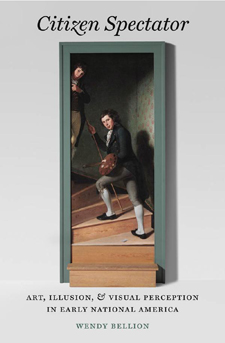




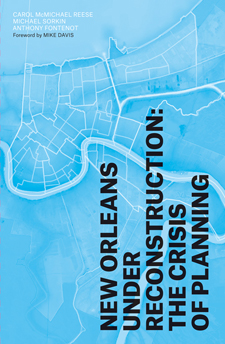

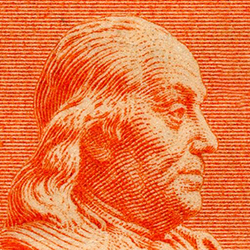 Margaret Samu
Margaret Samu
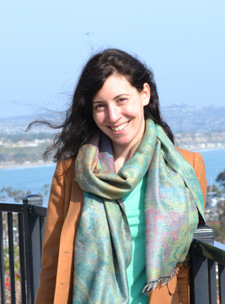 Lara Yeager-Crasselt
Lara Yeager-Crasselt
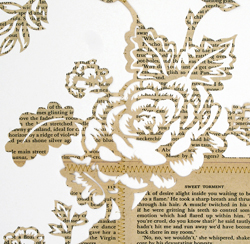 Lauren Scanlon, detail of Sweet Torment (Sorrel II), 2010, hand-cut romance-novel book pages and gold thread on paper, 17½ x 15¼ in. (artwork © Lauren Scanlon)
Lauren Scanlon, detail of Sweet Torment (Sorrel II), 2010, hand-cut romance-novel book pages and gold thread on paper, 17½ x 15¼ in. (artwork © Lauren Scanlon)
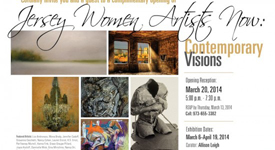

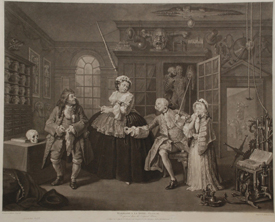 William Hogarth, Viscount with His Paramour Consulting an Empiric (from Marriage à la Mode), ca. 1743–45, engraving on paper, 18½ x 24 in. (artwork in the public domain)
William Hogarth, Viscount with His Paramour Consulting an Empiric (from Marriage à la Mode), ca. 1743–45, engraving on paper, 18½ x 24 in. (artwork in the public domain)
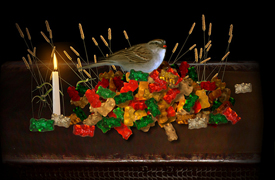 Lisa Crafts, Still Life with Gummi Bears (artwork © Lisa Crafts)
Lisa Crafts, Still Life with Gummi Bears (artwork © Lisa Crafts)
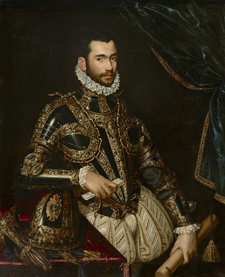 Scipione Pulzone, Jacopo Boncompagni, 1574, oil on canvas, 48 x 39 in. (artwork in the public domain; photograph by Michael Bodycomb)
Scipione Pulzone, Jacopo Boncompagni, 1574, oil on canvas, 48 x 39 in. (artwork in the public domain; photograph by Michael Bodycomb)
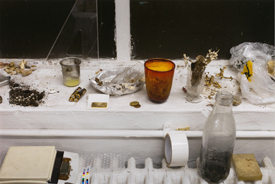 Wolfgang Tillmans, Nachtstilleben (Night Still Life), 2011 (negative)/2013 (print), chromogenic print, image and sheet: 53⅛ × 79¾ in. Philadelphia Museum of Art (artwork © Wolfgang Tillmans)
Wolfgang Tillmans, Nachtstilleben (Night Still Life), 2011 (negative)/2013 (print), chromogenic print, image and sheet: 53⅛ × 79¾ in. Philadelphia Museum of Art (artwork © Wolfgang Tillmans)


